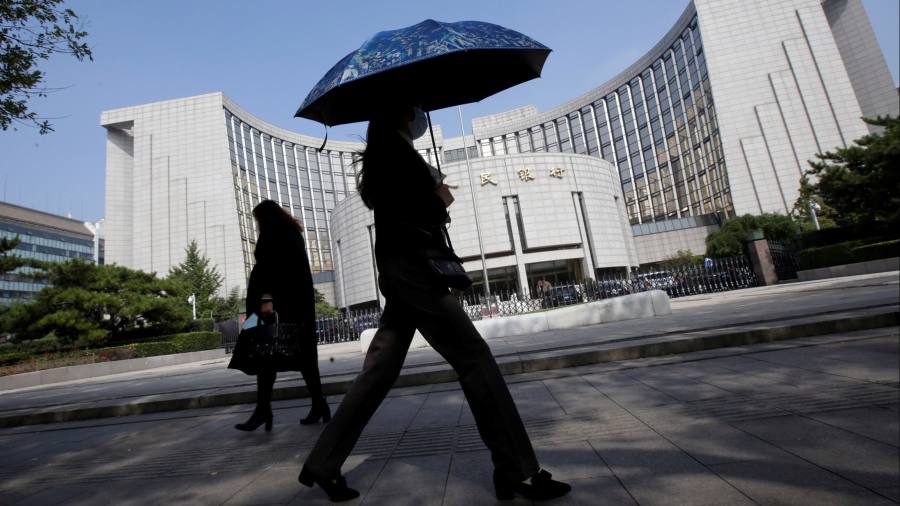The writer is an associate at Oxford university’s’s China Centre and research associate at SOAS University of London
In the US and Europe, the costs of regulatory failure and financial instability have been illustrated painfully by the implosions of Silicon Valley Bank, Credit Suisse and other smaller banks. The lessons from these episodes should not just be drawn in these regions. We would do well to note that China’s globally important financial system has some of the same vulnerabilities as well as many of its its own making. And such risks may be heightened by a recent regulatory shake-up.
China has been dealing with failures of several smaller and regional banks over the past few years that notably triggered protests by depositors at banks in Henan province. These failures seem to have abated for the time being, but the People’s Bank of China regarded some 316 such banks as high risk at the end of 2021, according to its quarterly review.
In early March, China announced at the National People’s Congress extensive regulatory changes that will see finance become much more centralised and subject to greater political control.
State institutions in the financial sector will be transformed. A new national financial regulatory administration is taking over banking and insurance regulation. It is also acquiring some supervisory functions for financial holding companies as well as some oversight responsibilities in consumer and investor protection from the People’s Bank of China and the China Securities Regulatory Commission. The latter will remain a separate entity, taking on bond issuance supervision for China’s financially stressed local governments.
Reforms to state institutions, however, are only part of a broader plan in which the Communist Party’s role will be strengthened to give it more control. A Central Financial Commission is going to be established, along with a Central Financial Work Committee, to oversee party-related affairs in the financial system. The aim is to ensure that full regulatory power and oversight are brought to bear in all sectors of the economy along with political direction. The sweeping changes are reminiscent of the so-called “rectification” campaign waged against the technology and data platforms from 2020 until recently, and testify to the government’s angst about financial instability.
The key question now for China, as for its western peers, is whether greater centralisation and politicisation of financial regulation is appropriate if the country wants to achieve a better balance in the trade-off between stability and efficiency in capital allocation.
China’s choice of centralisation and control is a big bet on stability. It could lessen fragmentation in the system, and short-circuit the tendency of financial intermediaries to engage in often destabilising arbitrage between the silos of regulatory and provincial agencies. It might also help to make the allocation of capital more effective from the Communist Party’s standpoint and bring some kind of order to the dysfunctional financial state of local governments.
Yet, centralisation and political control could also turn out as agents of, rather than barriers to, financial instability. Whether in a capitalist or a party-state system such as China, financial instability is never more likely than when the balance sheets of financial institutions are highly correlated. As it is, China’s 4,000 or so banks are already under state control and account for the bulk of the financial system since the authorities shrunk shadow banking.
In decentralised systems, coordinated balance sheet swings will usually not happen. Smaller and rolling shocks can be handled much better and pose much less systemic risk. Regulators can act more selectively to remove or lower implicit guarantees, and roll-over bad debt. This could reduce the risk of broader moral hazard in the system where risk-taking is back-stopped by the state.
Greater centralisation in China might actually handicap the government, accentuating financial instability risk as market participants all confirm to a behavioural model the party deems appropriate. Greater uniformity in the system’s balance sheet behaviour would then amplify fault lines such as bad debt, illiquidity and other problems, including poor decision-making. If all banks lend to the same sector, for example, then bubbles are likely to occur.
In their 2014 book on the financial crisis Fragile By Design, Charles Calomiris and Stephen Haber emphasised that countries get the banking system that their political institutions will permit. We would all do well to bear this in mind as China’s politicised finance sector moves towards more centralised control that reflects the party’s choices under president Xi Jinping.


























































![Mason Ramsey – Twang [Official Music Video] Mason Ramsey – Twang [Official Music Video]](https://i.ytimg.com/vi/xwe8F_AhLY0/maxresdefault.jpg)


















![Katie Couric Shares Brendan Sargent Selfie — [PHOTO] – TVLine Katie Couric Shares Brendan Sargent Selfie — [PHOTO] – TVLine](https://essentiallyhollywood.com/wp-content/themes/jnews/assets/img/jeg-empty.png)


